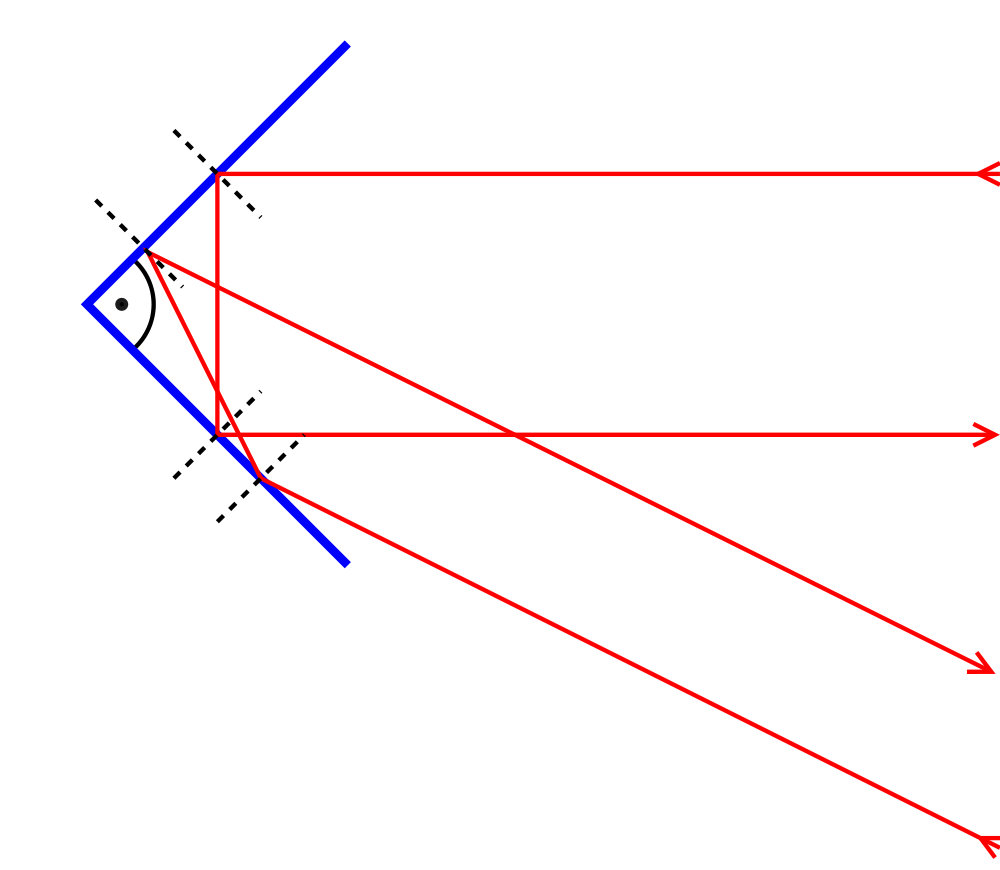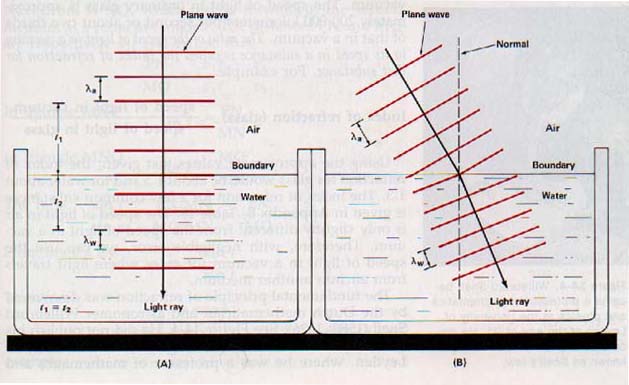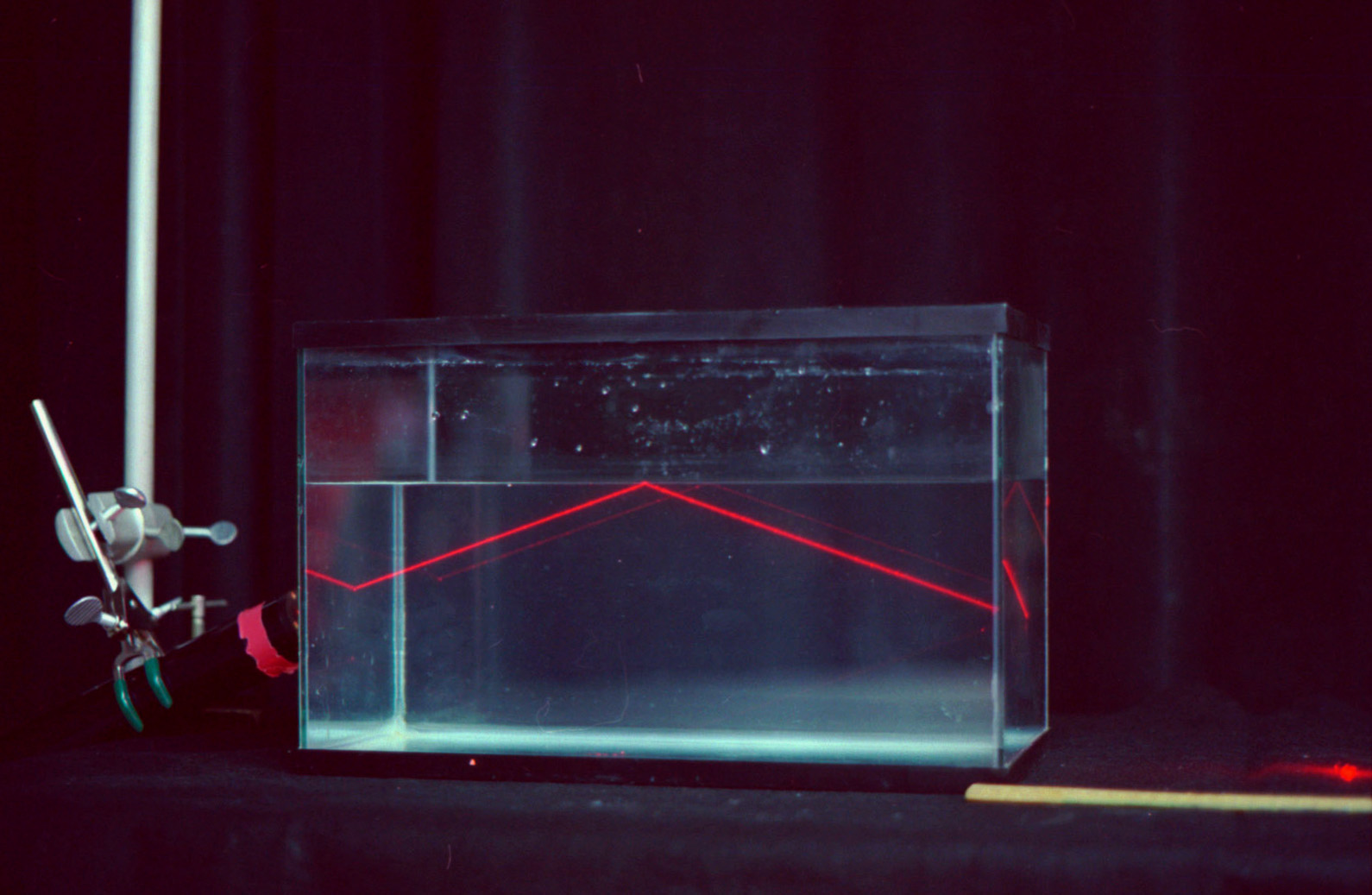Reflection
- Light is reflected is reflected from any surface (excluding the perfect black body where all incident light is absorbed).
- From the rough surface light is reflected in all directions, we deal with diffuse reflection
- We shall be interested in sufficiently smooth (polished) surfaces , when incident plane wave is reflected as an approximately plane wave again. Thus reflected light can be described by a ray.
The law of reflection: angle between the incident ray and the normal to the surface is the same as the angle between reflected ray and the normal
Properties of reflection
- Path is reversable
- Frequency and wavelength of reflected light are unchanged
- Intensity of reflected is not equal to the intensity of the incident light. Some light is absorbed even by the best mirrors. How much is reflected depends on properties of the mirror, wavelength of light and light polarization
- Intensity of reflected light increases with the angle.
- Reflected from two mirrors at right angle, the light goes directly back for any incident angle





